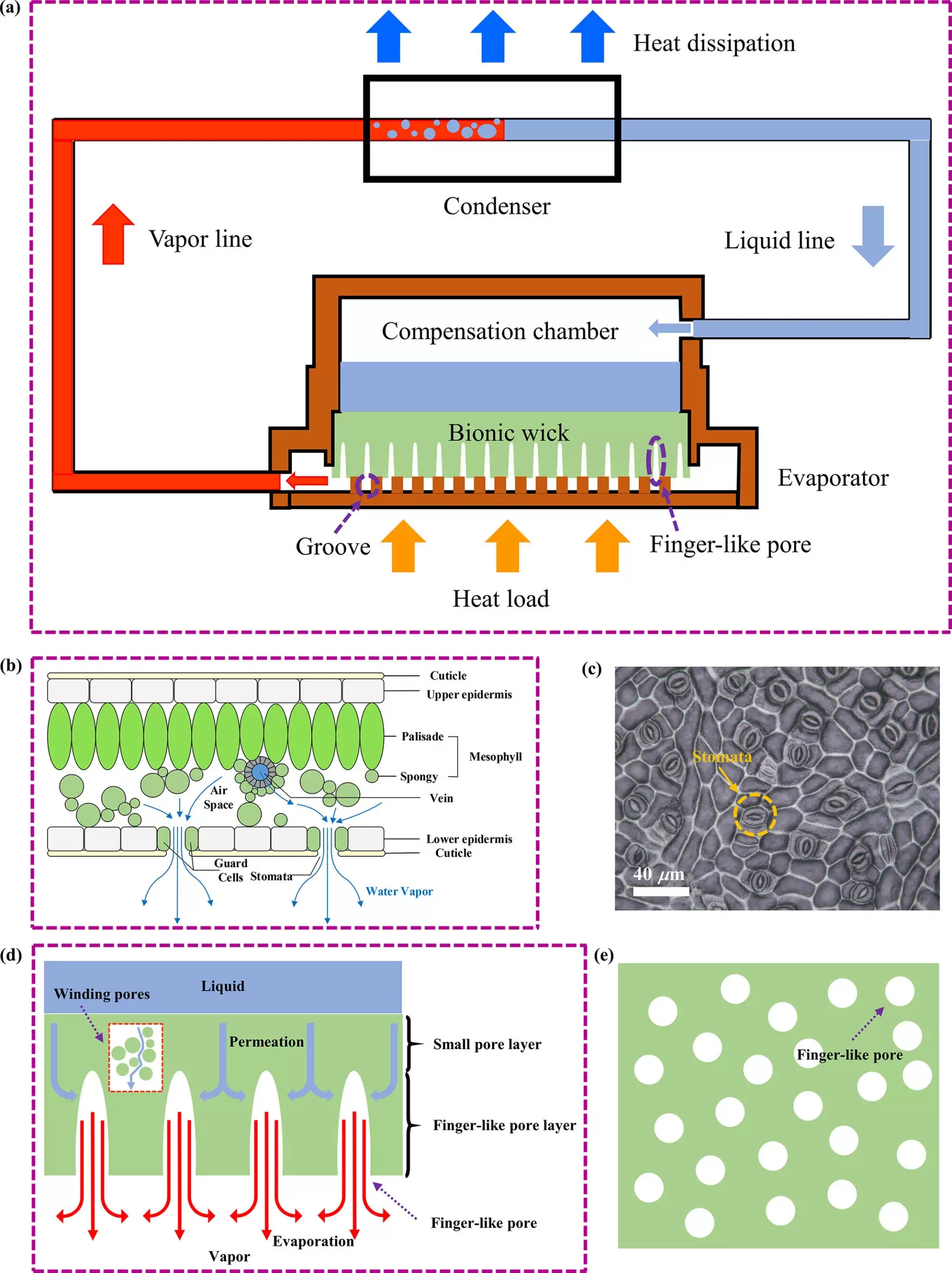In a groundbreaking study by Prof. Ye Hong and his team at the University of Science and Technology of China, a new alumina ceramic bionic wick has been developed for cooling electronic chips. Inspired by the stomatal array found in natural leaves, this innovative wick features finger-like pores that address the challenges posed by the increasing power consumption of electronic chips.
With the continuous improvement in the performance of electronic chips comes a rise in power consumption, leading to the need for more effective cooling strategies. While loop heat pipes (LHPs) have shown promise due to their high heat transfer capability and antigravity heat transfer, designing the pore structure of the capillary wick within an LHP has been a difficult task. The conflicting requirements for flow resistance and capillary force have presented a significant challenge.
To overcome this dilemma, Prof. Ye Hong’s team turned to nature for inspiration and developed an alumina ceramic bionic wick with finger-like pores using phase inversion tape casting. These finger-like pores, reminiscent of the stomatal structure of plant leaves, create an increased gas-liquid interface area, allowing for efficient expulsion of gaseous working fluids and reducing mass transfer resistance. Additionally, micron-sized pores surrounding the finger-like pores provide the necessary capillary force for liquid suction at the gas-liquid evaporation interface.
Startup and operation tests of the LHP with the bionic wick have confirmed its superior heat and mass transfer performance, effectively resolving the conflict between enhancing capillary force and reducing flow resistance. This innovative solution not only offers a new approach to high-power-density electronic chip cooling but also holds potential for applications in aerospace, aviation, and microelectronics fields.
The development of the alumina ceramic bionic wick represents a significant advancement in the field of electronic chip cooling. By mimicking the natural structure of plant leaves, this innovative wick provides a solution to the challenges faced in designing capillary wicks for LHPs. Its superior heat and mass transfer performance open up new possibilities for efficient thermal management in various industries.

